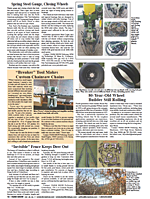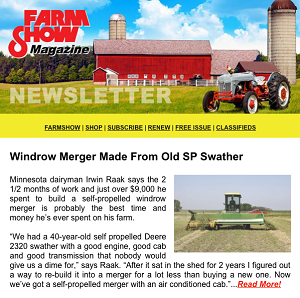You have reached your limit of 3 free stories. A story preview is shown instead.
To view more stories
(If your subscription is current,
click here to Login or Register.)
Researchers Transform Ag Waste Into Clothing
A Swedish university is making progress in turning agricultural waste into cellulose textiles. Currently, cellulose-based textiles come from wood pulp, but a study by researchers from Chalmers University of Technology highlights the potential of using agricultural waste from wheat and oats for the same final product. N
..........
You must sign in, subscribe or renew to see the page.

You must sign in, subscribe or renew to see the flip-book
Researchers Transform Ag Waste Into Clothing
A Swedish university is making progress in turning agricultural waste into cellulose textiles. Currently, cellulose-based textiles come from wood pulp, but a study by researchers from Chalmers University of Technology highlights the potential of using agricultural waste from wheat and oats for the same final product. Not only does processing agricultural byproducts require fewer chemicals than forest-based cellulose, but it also uses material that would otherwise go to waste.
The team tested oat husks, wheat straw, potato pulp and sugar beet pulp, finding that oat and wheat are most effective for developing a dissolving pulp for clothing.
“We define dissolving pulp as a pulp that is produced to make textile fibers,” says Diana Bernin, Associate Professor of Chemical Engineering at Chalmers University of Technology. “It has, for example, a different purity compared to the pulp that paper is made from.”
The team uses soda pulping as part of the process, which involves boiling the raw material in lye. Lye doesn’t contain toxins or substances that impact nature.
“Cellulose, the main part of textile fibers, needs to be separated from other components,” Bernin says. “Lignin and hemicelluloses are examples from agricultural waste. This is done by pulping. There are different processes to pulp, for example, wood or other cellulose-based wastes.”
Several other agricultural waste products can likely be used for textile production with this method.
“As for which plants have the most potential, I don’t have a good answer,” Bernin says. “We’ve seen that soda-pulping seems to work well for pressed grass. There are many more agricultural wastes to try and many process variables that need to be optimized.”
Still, the team sees good potential in using the pulp and paper industry, which already has technology in place, to make dissolving pulp from agricultural waste.
“I believe agricultural waste has great potential to increase in value if it can be used for textile production,” Bernin says. “It would be lovely if customers could choose textiles produced from waste instead of a virgin material like trees.”
Contact: FARM SHOW Followup, Diana Bernin, Associate Professor, Chemical Engineering, Chalmers University of Technology, 412 96 Gothenburg, Sweden (diana.bernin@chalmers.se).
To read the rest of this story, download this issue below or click
here to register with your account number.





